Sunday, May 30, 2010
Bay of Laig, Isle of Eigg, Scotland
"A journey of a thousand miles must begin with a single step." -- Lao Tzu Copyright © Demetrios the Traveler
In varful dealului (Dedicated), Romania
"A journey of a thousand miles must begin with a single step." -- Lao Tzu Copyright © Demetrios the Traveler
Munich, Germany
Munich is one of the most beautiful cities in Germany. I'm happy that I was privileged to live there once for a while. I usually try to visit the city once in year, if possible. If you do a Europe tour it is all the time worth to make a short stop in Munich. Not only for the Octoberfest ;-)
"A journey of a thousand miles must begin with a single step." -- Lao Tzu Copyright © Demetrios the Traveler
Tuesday, May 25, 2010
Egeskov Castle, Funen, Denmark.
Egeskov's history dates to the 14th century. The castle structure was erected by Frands Brockenhuus in 1554.
Due to the troubles caused by the civil war known as the Count's Feud (Danish: Grevens fejde), general civil unrest, and a civil war introducing the Protestant Reformation, most Danish noblemen built their homes as fortifications. The castle is constructed on oaken piles and located in a small lake with a maximum depth of 5 meters (16 ft). Originally, the only access was by means of a drawbridge. According to legend, it took an entire forest of oak trees to build the foundation, hence the name Egeskov (“oak forest”)
The castle consists of two long buildings connected by a thick double wall, allowing defenders to abandon one house and continue fighting from the other. The double wall is over one meter thick and contains secret staircases and a well. Defenders were able to attack an enemy's flanks from the two round corner towers. Other medieval defences include artillery ports, scalding holes and arrow slits. The bricks composing the castle are of an oversized medieval type sometimes called "monks bricks". The conical towers are constructed in a series of separate panels.
The architecture includes depressed and round-arched windows, round-arched blank arcading within the gables, and a double string course between the high cellar and the ground floor. The structure contains some of the early indoor plumbing design first used in Europe with vertical shafts for waste. The thick double wall also contains a water well which is accessed from the servants kitchen in the east house. Several of the large rooms have massive parallel exposed beams with some end carving.
source: http://en.wikipedia.org/wiki/Egeskov_Castle
"A journey of a thousand miles must begin with a single step." -- Lao Tzu Copyright © Demetrios the Traveler
Door to the Greek islands
The Greek Islands are a collection of over 6,000 islands and islets that belong to Greece. Only 227 of the islands are inhabited, and only 78 of those have more than 100 inhabitants.
The largest Greek island by area is Crete, located at the southern edge of the Aegean Sea. The second largest island is Euboea, which is separated from the mainland by the 60m-wide Euripus Strait, and is administered as part of the central Greece periphery. After the third and fourth largest Greek Islands, Lesbos and Rhodes, the rest of the islands are two-thirds of the area of Rhodes, or smaller.
The Greek islands are traditionally grouped into the following clusters: The Argo-Saronic Islands in the Saronic gulf near Athens, the Cyclades, a large but dense collection occupying the central part of the Aegean Sea, the North Aegean islands, a loose grouping off the west coast of Turkey, the Dodecanese, another loose collection in the southeast between Crete and Turkey, the Sporades, a small tight group off the coast of Euboea, and the Ionian Islands, located to the west of the mainland in the Ionian Sea (one of these islands, Kythira, is off the southern tip of the mainland, but still considered part of the Ionian Islands).
"A journey of a thousand miles must begin with a single step." -- Lao Tzu Copyright © Demetrios the Traveler
Sunday, May 23, 2010
Monastery of Roussanou | Meteora, Greece
The Metéora (Greek: Μετέωρα, "suspended rocks", "suspended in the air" or "in the heavens above") is one of the largest and most important complexes of Eastern Orthodox monasteries in Greece, second only to Mount Athos.
The six monasteries are built on natural sandstone rock pillars, at the northwestern edge of the Plain of Thessaly near the Pineios river and Pindus Mountains, in central Greece. The nearest town is Kalambaka. The Metéora is included on the UNESCO World Heritage List under criteria I, II, IV, V and VII.
"A journey of a thousand miles must begin with a single step." -- Lao Tzu Copyright © Demetrios the Traveler
Sunset in Bamberg, Bavaria, Germany
Bamberg is a town in Bavaria, Germany. It is located in Upper Franconia on the river Regnitz, close to its confluence with the river Main. Bamberg is one of the few cities in Germany that was not destroyed by World War II bombings because of a nearby Artillery Factory that prevented planes from getting near to Bamberg. Bamberg is home to nearly 7,000 foreign nationals, including over 4,100 members of the United States Army and their dependents. The name Bamberg is supposed to have its origin in the House of Babenberg.
source: http://en.wikipedia.org/wiki/Bamberg
"A journey of a thousand miles must begin with a single step." -- Lao Tzu Copyright © Demetrios the Traveler
Dunluce Castle, Antrim Coast, Northern Ireland.
The limestone cliffs of the White Rocks ends abruptly against a dark basalt outcrop which is majestically crowned by Dunluce Castle and joined to the mainland by an arched walkway, underneath lies the ' Mermaid's Cave'. It is believed that the castle was built or (possibly) rebuilt by Richard de Burgh or one of his chief followers during the Anglo Norman period in Ireland. The site certainly was occupied as a fort before this time, a souterrain exists on the outcrop under one of the towers. The castle which has seen many additions to its original structure over the centuries gradually fell into disuse from the late 1600s' when the last occupier, Randall MacDonnell, the second Earl of Antrim moved to Ballymagarry House. In the mid 1700s the seat of the Earl's of Antrim moved to the present location of Glenarn Castle. A thriving merchant village that once surrounded the castle was destroyed by fire during 1641 when the castle was besieged by an Irish army, the outlines of some of the old walls can still be seen in the land to the west of the castle. Close by is the ancient church ruins of St. Cuthbert's named after a Northumbrian monk and the (possible) burial site of sailors and noblemen from the Spanish Armada. The most colourful occupier of Dunluce Castle was Sorley Boy MacDonnell, a Scottish chieftain whose clan established their dominance along the north coast in the mid 1500s, he had many differences of opinion with Queen Elizabeth who sent Sir John Perrottt here in 1584 to bring him to task but Sorley evaded arrest. Dunluce Castle was fought over many times in its past and it is wrapped in myths and legends. On a clear day you can look over an expanse of ocean from here to Donegal and round to Islay, a view which has remained unchanged for centuries.
Hundertwasser House, Vienna, Austria
The Hundertwasser House is an apartment house in Vienna, Austria, designed by Austrian artist Friedensreich Hundertwasser. This landmark of Vienna is located in the 3. district, Kegelgasse 34-38 / Löwengasse 41-43.
The house was built between 1983 and 1986. It features undulating floors, a roof covered with earth and grass, and large trees growing from inside the rooms, with limbs extending from windows. Hundertwasser took no payment for the design of the house, declaring that it was worth it, to prevent something ugly from going up in its place.
Within the house there are 52 apartments, four offices, 16 private terraces and three communal terraces, and a total of 250 trees and bushes. The Hundertwasser House is one of Austria's most visited buildings and has become part of Austria's cultural heritage.
(Adapted from: Wikipedia)
"A journey of a thousand miles must begin with a single step." -- Lao Tzu Copyright © Demetrios the Traveler
Casa Batlló, Barcelona, Spain
Between 1898 and 1906 three adjacent houses in one block on the fashionable boulevard 'Passeig de Gracia' were built by some of the most important modernist architects: Casa Amatller (designed by Puig i Cadafalch), Casa Lléo Morera (designed by Domènech i Montaner) and Gaudí's Casa Batlló.
All three houses were designed in a different interpretation of the modernist style in what seems like a competition between the architects. This lead to the local term 'Mançana de la Discordia', which means apple of discord, referring to Greek mythology where an apple, given by the goddess Eris 'to the fairest' lead to a dispute between three goddesses, eventually leading to the Trojan War. Conveniently the word mançana also means 'block', so the expression 'Mançana de la Discordia' can also be translated as 'Block of Discord'.
Of the three houses, Wooden door, Gaudi style Casa Batlló is the most expressive. The house was originally built between 1875 and 1877. In 1900 it was bought by the rich industrialist Josep Battló i Casanovas who commissioned Gaudí to tear down the old house and reconstruct a new one. Gaudí however convinced Battló to remodel the existing building. Between 1904 and 1906 Gaudí redesigned the facade and roof, added an extra floor and completely remodeled the interior.
The façade of the Casa Batlló is quite whimsical. It is made of sandstone covered with colorful trencadis (a Catalan type of mosaic). Typical of Gaudí, straight lines are avoided whenever possible. The first floor features irregularly sculpted oval Detail of the roofwindows. Balconies at the lower floors have bone-like pillars, those on the upper floors look like pieces of skulls. These features gave the house the nickname 'House of Bones'. The enlarged windows on the first floor gave it another nickname, 'House of Yawns'.
The colorful scaled roof recalls a reptile skin. According to some authorities on Gaudí architecture, the roof represents a dragon; the small turret with a cross would symbolize the sword of St. George stuck into the dragon. The bones and skulls on the facade represent all the dragon's victims.
"A journey of a thousand miles must begin with a single step." -- Lao Tzu Copyright © Demetrios the Traveler
Colmar, Alsace, France
Place des Dominicains in Colmar
Colmar is a commune in the Haut-Rhin department in Alsace in northeastern France.
Colmar is 64 kilometers south-southwest of Strasbourg on the Lauch River, directly to the east of the Vosges Mountains. It is connected to the Rhine by a canal.
It is situated along the Alsatian Wine Route and considers itself to be the "Capital of Alsatian Wine" (capitale des vins d'Alsace).
Colmar has a sunny microclimate and is the driest city in France, with an annual precipitation of just 550 mm, making it ideal for Alsace wine.
Colmar's secular and religious architectural landmarks reflect eight centuries of Germanic and French architecture and the adaptation of their respective stylistic language to the local customs and building materials (pink and yellow Vosges sandstone, timber framing). The medieval centre of this historic town has fine overhanging timber-framed buildings, dating from the 16th and 17th centuries, a dream for the keen photographer.
The area crossed by canals of the river Lauch, and which formerly served as the butcher's, tanner's and fishmonger's quarter, is now called "little Venice" (Petite Venise). Picturesque colourful timber framed houses were built to both sides of the small river La Lauch.
Many tourists visit the town
"A journey of a thousand miles must begin with a single step." -- Lao Tzu Copyright © Demetrios the Traveler
Rockefeller Center, NYC, USA
Soar 70 floors high and experience the exhilarating joy of unobstructed 360º city views from the Top of the Rock Observation Deck. From the sweeping green of Central Park to the thrilling city skyline, nowhere else can you see New York so spectacularly.
A timed-ticketing system brings you to the Top, exactly when you want. While on deck, get your picture taken by Kodak's professional team and bring home the experience
source:http://www.rockefellercenter.com/
"A journey of a thousand miles must begin with a single step." -- Lao Tzu Copyright © Demetrios the Traveler
Kiev Opera House, Kiev, Ukraine
Established in the summer of 1867 by Ferdinand Berger (? - 1875). Berger succeeded in inviting many talented singers, musicians, and conductors, and the city council (duma) had offered the newly created trouppe to use the City Theatre (constructed in 1856, architect I. Shtrom) for their performances. Officially, the theatre was named the City Theatre but was most commonly referred to as the Russian Opera. The day of the first performance, November 8 (October 27 old style), 1867 was made a city holiday. The performance of the opera Askold's Tomb by Alexey Verstovsky was the troupe's debut. The initial success is attributed to the vocal talents of that time of O. Satagano-Gorchakova, F. L'vov, M. Agramov but also to the captivating plot taken from some principal pages of the ancient history of the city.
Early performances were mostly Russian operas, including Ruslan and Lyudmila by Mikhail Glinka, Rusalka by Alexander Dargomyzhsky, Maccabees by Anton Rubinstein and The Enemy's Power by A. Serov, as well translated European operas including The Barber of Sevile by Rossini, The Marriage of Figaro by Mozart, The Magic Archer by Weber, Lucia di Lammermoor by Donizetti, and also operas by Giuseppe Verdi, which became the favorite of the Kievites.
On February 4, 1896, after a morning performance of Eugene Onegin by Tchaikovsky, a fire erupted from the unextinguished candle in the theatre. The fire consumed the whole building within several hours. One of the largest musical libraries in Europe along with numerous costumes and stage props of many performances were lost during the fire. After the fire of the City Theatre, the troupe performed on other stages for several years, including Bergonie's Theatre (now the National Theatre of Russian Drama named after Lesya Ukrainka), Solovtsov's Theatre (now the National Theatre named after Ivan Franko) and even on the arena of the famous Krutikov's Circus.
After the fire, the City Council had announced the international competition to design a new building for the Opera Theatre in Kiev. The winning proposal was by Victor Aleksandrovich Shreter. The exterior was designed in Neo-Renaissance style and had accounted for the needs of the actors and the spectators. The interior was redesigned in a classical style and called Viennese Modern. However, his greatest achievement is considered to be the stage - one of the largest in Europe designed to the latest engineering standards.
On September 29 (September 16 old style), 1901, the solemn opening of the new premise of the theatre took place with a performance of cantata Kiev by composer Wilhelm Hartweld (1859 - 1927) and a presentation of the opera Life for the Tsar by M. Glinka.
In the first decade of the 20th century, the Kiev Opera Theatre attracted the most outstanding Ukrainian and Russian singers, including O. Petlyash, P. Tsecevich, K. Voronets, M. Medvedev, K. Brun, O. Mosin and O. Kamionsky and famous opera stars from the West often came on tours. Several unusual for the time performances took place on the stage: Die Walkure by Wagner, Sadko by Rimsky-Korsakov and Mefistofele by Boyto.
As Kiev began to grow and with the conclusion of World War I, the Kiev Opera occupied a special place in the USSR and the world. The Kiev Opera Theatre was considered to be one of the most prestigious in Ukraine and Russia.
During the intermission of a performance on September 1, 1911, Dmitry Bogrov killed Prime Minister Peter Stolypin.
source:http://en.wikipedia.org/wiki/National_Opera_House_of_Ukraine
"A journey of a thousand miles must begin with a single step." -- Lao Tzu Copyright © Demetrios the Traveler
Thursday, May 20, 2010
Chrysler Building, NYC, USA
Chrysler Building was the world's tallest building from 27 May 1930 to 1931.
Record height
Preceded by 40 Wall Street
Surpassed by Empire State Building
Location 405 Lexington Avenue, Manhattan, NY, United States
Constructed 1928-1930
Height
Antenna or spire 318.9 m (1,046 ft)
Roof 282.0 m (925 ft)
Top floor 274.0 m (899 ft)
Technical details
Floor count 77 [1]
Floor area 1,195,000 sq ft (111,000 m2)
Elevators 32
Architect(s) William Van Alen
Owner Abu Dhabi Investment Council (90%)
Tishman Speyer (10%)
Fully habitable, self-supported, from main entrance to highest structural or architectural top;
Location in New York City
Coordinates: 40°45′6.12″N 73°58′31.08
The Chrysler Building is an Art Deco skyscraper in New York City, located on the east side of Manhattan in the Turtle Bay area at the intersection of 42nd Street and Lexington Avenue. Standing at 319 metres (1,047 ft), it was the world's tallest building for 11 months before it was surpassed by the Empire State Building in 1931. After the destruction of the World Trade Center, it was again the second-tallest building in New York City until December 2007, when the spire was raised on the 365.8-metre (1,200 ft) Bank of America Tower, pushing the Chrysler Building into third position. In addition, The New York Times Building which opened in 2007, is exactly level with the Chrysler Building in height.
The Chrysler Building is a classic example of Art Deco architecture and considered by many contemporary architects to be one of the finest buildings in New York City. In 2007, it was ranked ninth on the List of America's Favorite Architecture by the American Institute of Architects.
"A journey of a thousand miles must begin with a single step." -- Lao Tzu Copyright © Demetrios the Traveler
Sunday, May 16, 2010
Night in the harbour, Rovinj, Croatia
Rovinj (Istriot: Ruvèigno or Ruveîgno; Italian: Rovigno) is a city in Croatia situated on the north Adriatic Sea with a population of 13,562 (2007). It is located on the western coast of the Istrian peninsula and is a popular tourist resort and an active fishing port. Istriot, a Romance language once widely spoken in this part of Istria, is still spoken by part of the residents (also called Rovignese by those who speak it here). There is a centre of History Research which is an institution of the Council of Europe.
Rovinj was already a settlement of Illyrian tribes before being captured by the Romans, who called it Arupiunum or Mons Rubineus, and later Ruginium and Ruvinium. Built on an island close to the coast, it was connected with the mainland in 1763 by filling in the channel.
It became part of the Byzantine empire, then in the sixth century part of the Exarchate of Ravenna and in 788 part of the Frankish empire. Then it came under the rule of different feudal lords during several centuries. From 1209 it was ruled by the Aquilean patriarch.
It was from 1283 to 1797 one of the most important towns of Istria under the Republic of Venice. The city was fortified by two rows of walls with three town gates. The remaining town walls date from this period. Close to the pier one can find the old town gate Balbi's Arch, dating from 1680, and a late-Renaissance clock tower. The city got its statutes in 1531.
After the fall of Venice and the Napoleonic parenthesis, Rovinj was part of the Austrian Empire until World War I. Then it belonged to Italy from 1918 to 1947, when it was ceded to SR Croatia within SFR Yugoslavia. During that period much of the Italian inhabitants left the city.
From Wikipedia, the free encyclopedia
http://en.wikipedia.org/wiki/Rovinj
Thursday, May 13, 2010
Kalimera visit Greece!
"A journey of a thousand miles must begin with a single step." -- Lao Tzu Copyright © Demetrios the Traveler
Wednesday, May 12, 2010
islas Galapagos, Ecuador
"A journey of a thousand miles must begin with a single step." -- Lao Tzu Copyright © Demetrios the Traveler
Monday, May 10, 2010
Mount Etna, Sicily - Italy
Mount Etna (Αἴτνη (Aítnē) in Classical Greek, Aetna in Latin, also known as Muncibeddu (beautiful mountain) in Sicilian and Mongibello in Italian (from the Latin mons and the Arabic gibel, both meaning mountain) is an active stratovolcano on the east coast of Sicily, close to Messina and Catania. Its Arabic name was Jebel Utlamat (the Mountain of Fire). According to Adrian Room’s book Placenames of the World, the name Etna is said to have originated from a Phoenician word attuna meaning “furnace.” He dismisses the theory that Etna is from a Greek source meaning “I burn.” It is the largest active volcano in Europe, currently standing 3,329 metres (10,922 ft) high, though this varies with summit eruptions; the mountain is 21 m (69 ft) lower now than it was in 1981. It is the highest mountain in Italy south of the Alps. Etna covers an area of 1,190 km² (460 sq mi) with a basal circumference of 140 km. This makes it by far the largest of the three active volcanoes in Italy, being about two and a half times the height of the next largest, Mount Vesuvius. Only Mount Teide in Tenerife surpasses it in the whole of the European region (though geographically Tenerife is an island of Africa). In Greek Mythology, the deadly monster Typhon was trapped under this mountain by Zeus, the god of the sky.
Mount Etna is one of the most active volcanoes in the world and is in an almost constant state of activity. The fertile volcanic soils support extensive agriculture, with vineyards and orchards spread across the lower slopes of the mountain and the broad Plain of Catania to the south. Due to its history of recent activity and nearby population, Mount Etna has been designated a Decade Volcano by the United Nations.
Boston Massachusetts,USA
Boston is the capital and largest city in Massachusetts, and is one of the oldest cities in the United States. The largest city in New England, Boston is sometimes regarded as the unofficial "Capital of New England" for its economic and cultural impact. Boston city proper had a 2008 estimated population of 620,535, making it the twenty-first largest in the country. Boston is also the anchor of a substantially larger metropolitan area called Greater Boston, home to 4.5 million people and the tenth-largest metropolitan area in the country. Greater Boston as a commuting region includes six Massachusetts counties, Essex, Middlesex, Norfolk, Suffolk, Plymouth, and Worcester, all of Rhode Island and parts of New Hampshire; it is home to 7.5 million people, making it the fifth-largest Combined Statistical Area in the United States.
In 1630, Puritan colonists from England founded the city on the Shawmut Peninsula. During the late 18th century, Boston was the location of several major events during the American Revolution, including the Boston Massacre and the Boston Tea Party. Several early battles of the American Revolution, such as the Battle of Bunker Hill and the Siege of Boston, occurred within the city and surrounding areas. Through land reclamation and municipal annexation, Boston has expanded beyond the peninsula. After American independence was attained Boston became a major shipping port and manufacturing center, and its rich history now helps attract 16.3 million visitors annually. The city was the site of several firsts, including America's first public school, Boston Latin School (1635) and the first subway system in the United States.
With many colleges and universities within the city and surrounding area, Boston is a center of higher education and a center for medicine. The city's economy is also based on research, electronics, engineering, finance, and high technology—principally biotechnology. The city has been experiencing gentrification and has one of the highest costs of living in the United States, though it remains high on world livability rankings.
"A journey of a thousand miles must begin with a single step." -- Lao Tzu Copyright © Demetrios the Traveler
red telephone box, London - UK
The red telephone box, a public telephone kiosk designed by Sir Giles Gilbert Scott, is a familiar sight on the streets of the United Kingdom, Malta, Bermuda and Gibraltar, and despite a reduction in their numbers in recent years, red boxes can still be seen in many places and current or ex-British Colonies around the world. The colour red was chosen to make them easy to spot.
"A journey of a thousand miles must begin with a single step." -- Lao Tzu Copyright © Demetrios the Traveler
Sunday, May 9, 2010
Τhessaloniki, Macedonia, Greece
Thessaloniki (Greek: Θεσσαλοnίkh, IPA: [θesaloˈnici]), Thessalonica, or Salonica is the second-largest city in Greece and the capital of Macedonia. Its honorific title is Συμпpωτεύουσα (Symprotévousa), literally "co-capital", a reference to its historical status as the Συμβασiλεύουσα (Symvasilévousa) or "co-reigning" city of the Byzantine Empire, alongside Constantinople. According to the 2001 census, the municipality of Thessaloniki had a population of 363,987, its Urban Area 800,764 and the Larger Urban Zone (LUZ) of Thessaloniki has an estimated 995,766 residents (2004).
Thessaloniki is Greece's second major economic, industrial, commercial and political centre, and a major transportation hub for the rest of southeastern Europe; its commercial port is also of great importance for Greece and its southeast European hinterland. The city hosts an annual International Trade Fair, the Thessaloniki International Film Festival, and the largest bi-annual meeting of the Greek diaspora.
Thessaloniki is home to numerous notable Byzantine monuments, including the Paleochristian and Byzantine monuments of Thessalonika, a UNESCO World Heritage Site, as well as several Ottoman and Sephardic Jewish structures.
the above from wikipedia
=====================================================
History of Thessaloniki
315 B.C. Thessaloniki founded by King Cassander of Macedonia.
The city soon became the commercial and cultural center of Macedonia and of the Balkan peninsula.
168 B.C. The Romans make Thessaloniki the capital of the Roman province of Macedonia and the Southern Balkans.
The construction of the famous Via Egnatia together with the city's harbor contributes to Thessalonica's growth and prosperity.
395A.D. Founding of the Byzantine Empire. Thessaloniki is proclaimed "coregent" with Constantinople.
The city takes on a Byzantine character which it has maintained to the present day, with more (and more significant)
Byzantine monuments than any other city in Europe.
1430 Thessaloniki is occupied by the Turks.
After a period of economic and cultural stagnation, the city begins to exploit the reforming tendencies
of the Ottoman Empire and becomes once again a commercial and cultural beacon for the peoples of the Balkans.
1912 Thessaloniki is liberated by the Greek army on the feast day of its patron saint, Aghios Demetrios.
It soon enters a new period of rapid economic and cultural growth.
1994 Thessaloniki is one of the major metropolitan centers in the Mediterranean basin.
1997 Thessaloniki: The Cultural Capital of Europe.
Thessaloniki, which is one of the few Greek cities to have experienced constant cultural development, has continuously played a significant role in both Greek and world history. For over 4000 years, from the 3rdmillenium B.C. up to the present day, Thessaloniki has been a city which has attracted the interest of both specialists and the general public. Visitors to the city can enjoy the combination of aesthetic delight, historical and archaeological knowledge and natural beauty.
When king Cassander of Macedonia founded Thessaloniki in 315 B.C, on the site of the Ancient Greek town of Therme, joining 26 townships at the head of the gulf bearing the same name, he named the city after his wife, the half-sister of Alexander the Great. The city subsequently gained the reputation of being "Mother of all Macedonia", a commercial centre possessing connections with all the ports of the East, its own coinage and a cultural development equal to that of the other Greek cities.
A "Free City" during the Roman era, linked to the East and the West by the Via Egnatia(l30 B.C.) it preserved the Greek language and its ethnic integrity, developing into the most populous city in Macedonia with the most important monuments, which continue to adorn it.
In Thessaloniki in 50 A.D. the Apostle Paul founded the second Christian church on the European continent and sent it his "Epistles to the Thessalonians".
Joint capital of the Byzantine Empire and cradle of the Christian faith and Greek culture, Thessaloniki was the "eye of Europe and particularly of Greece". Thessaloniki still preserves outstanding monuments which are characteristic of Byzantine art from the 5th until the 14th century A.D. The artistic, intellectual and religious influence it exerted contributed decisively to the development of the Balkan peoples, who were converted to the Christian faith by the Thessalonian theologians Cyril and Methodius (863) A.D.)
The cult of Saint Demetrius, the city's patron saint, spread all over the Balkans.
During the long period of Turkish rule (1430-1912) and despite the terrible acts of destruction it suffered, Thessaloniki retained its moral and ethnic strength, which the city had inherited from its age-old culture, and after constant struggles and sacrifices succeeded in regaining its freedom.
The capital of Macedonia, and a commercial, industrial and spiritual centre of international importance, the modem city of Thessaloniki can satisfy the demands of any visitor.
One can get on overall picture of the history of Macedonia, and more particularly of Thessaloniki, by visiting the Archaeological Museum; the largest in Macedonia. It has existed in its present form since 1961, and its galleries are continuously being enriched with finds dating from prehistoric times up to the early Christian era. The Derveni, Sindos and Vergina galleries, with their exhibits of unrivalled artistry and importance are famous throughout the world. The Ethnological and Folk Art Museum, which was established in 1931 and has been running since 1947, as well as the Museum of the Macedonian Struggle, enable the visitor to get to know the art and history of recent times, the traditional architecture which Greek artisans spread all over the Balkans, and the evidence of the glorious struggles which were waged for the liberation of Macedonia.
A tour of the city will also give the tourist a comprehensive picture of the city's historic past. One should start at the Ramparts which in their present form extend over 3 kilometers and include 6 towers. the main one of which is the White Tower - the symbol of Thessaloniki. Then one should make one's way to the Galerius complex, which dates back to the 4th century A.D.). with the triumphal arch, the palace and the Rotunda, then to the Ancient Roman Agora and the Odeon, and finally to the churches, magnificent examples of early Christian and Byzantine art.
The city of Thessaloniki today, possessing as it does the second largest and most important port in Greece, the International Fair - which attracts commercial interest from all over the world- and the largest university in the country, and offering cultural events, theaters, Modern Art galleries, libraries, some of the most exclusive spores in Greece, an immense variety of high standard recreational facilities and examples of modern architecture, art nouveau and eclecticism, offers the visitor an exciting experience.
the above from: http://www.macedonia.info
"A journey of a thousand miles must begin with a single step." -- Lao Tzu Copyright © Demetrios the Traveler
bridge to Vatican, Rome, Italy
Vatican City, officially the State of the Vatican City (Italian: Stato della Città del Vaticano, pronounced is a landlocked sovereign city-state whose territory consists of a walled enclave within the city of Rome, the capital city of Italy. It has an area of approximately 44 hectares (110 acres), and a population of just over 800.
Vatican City was established in 1929. It is distinct from the Holy See, which dates back to early Christianity and is the main episcopal see of 1.147 billion Latin and Eastern Catholic adherents around the globe. Ordinances of Vatican City are published in Italian; official documents of the Holy See are issued mainly in Latin. The two entities even have distinct passports: the Holy See, not being a country, only issues diplomatic and service passports; the state of Vatican City issues normal passports. Very few passports are issued by either authority.
The Lateran Treaty in 1929, which brought the city-state into existence, spoke of it as a new creation (Preamble and Article III), not as a vestige of the much larger Papal States (756-1870) that had previously encompassed central Italy. Most of this territory was absorbed into the Kingdom of Italy in 1860, and the final portion, namely the city of Rome with a small area close to it, ten years later, in 1870.
Vatican City is an ecclesiastical or sacerdotal-monarchical[6] state, ruled by the bishop of Rome—the Pope. The highest state functionaries are all Catholic clergymen of various nationalities. It is the sovereign territory of the Holy See (Sancta Sedes) and the location of the Pope's residence, referred to as the Apostolic Palace.
The Popes have resided in the area that in 1929 became Vatican City since the return from Avignon in 1377. Previously, they resided in the Lateran Palace on the Caelian Hill on the opposite side of Rome, which site Constantine gave to Pope Miltiades in 313. The signing of the agreements that established the new state took place in the latter building, giving rise to the name of Lateran Pacts, by which they are known.
"A journey of a thousand miles must begin with a single step." -- Lao Tzu Copyright © Demetrios the Traveler
Saturday, May 8, 2010
Moulin Rouge, Paris - France
Carefree life, Flickleness and Joie de Vivre... Those are the three words that could best sum up this unique period in the History of France. It was a rest between two wars, a period of transition between two centuries, during which the social barriers collapsed, when the industrial revolution gave hope of a better life for all, in a rich cultural profusion and that promised much fun.
The middle-class mixed with the riffraff, the popular culture was enchanced in a contented disorder full of joy and vitality. In that atmosphere, which favoured artistic creativity, literary circles appeared and disappeared according to people'meetings, while painters and drawers got especially inspired by this joyful sometimes outrageous but full of fancy atmosphere that broke completely with the rigid classicism of that period.
The Japonism *, a movement of Far-East inspiration using influences from the Japanese style in French Art, was at its height. Toulouse-Lautrec and his famous Japanese engravings was one of the most famous disciples of that time. The atmosphere fitted perfectly to the appearance of the first cabarets, such as the Moulin Rouge in 1889.
the above and more, from:
http://www.moulinrouge.fr/home-flash-gb.html
"A journey of a thousand miles must begin with a single step." -- Lao Tzu Copyright © Demetrios the Traveler
Times Square, New York - USA
Times Square is a major commercial intersection in the borough of Manhattan in New York City, at the junction of Broadway and Seventh Avenue and stretching from West 42nd to West 47th Streets. The extended Times Square area, also called the Theatre District, consists of the blocks between Sixth and Eighth Avenues from east to west, and West 40th and West 53rd Streets from south to north, making up the western part of the commercial area of Midtown Manhattan.
Formerly named Longacre Square, Times Square was renamed in April 1904 after the New York Times moved its headquarters to the newly built Times Building, which is now called One Times Square and is the site of the annual ball drop on New Years Eve. Times Square, nicknamed "The Crossroads of the World" and "The Great White Way", has achieved the status of an iconic world landmark and is a symbol of New York City and the United States.
Tuesday, May 4, 2010
this is not my country...
Protesters take over Acropolis
"A journey of a thousand miles must begin with a single step." -- Lao Tzu Copyright © Demetrios the Traveler
Monday, May 3, 2010
The Empress Hotel, Victoria, British Columbia, Canada
The Fairmont Empress (most commonly known as The Empress) is one of the oldest and most famous hotels in Victoria, British Columbia, Canada. Located on Government Street facing the Inner Harbour, the Empress has become an iconic symbol for the city itself.
The Edwardian, château-style hotel was designed by Francis Rattenbury for Canadian Pacific Hotels as a terminus hotel for Canadian Pacific's steamship line, whose main terminal was just a block away. The hotel was to serve businesspeople and visitors to Victoria, but later as Canadian Pacific ceased its passenger services to the city, the hotel was successfully remarketed as a resort to tourists. Victoria emerged as a tourist destination beginning in the mid-to-late 1920s
The hotel has 477 rooms, with most either overlooking the Inner Harbour or the hotel's rear courtyard gardens. It has four restaurants, including The Bengal Lounge, which is decorated in Victorian-era, Colonial Indian style (when Queen Victoria was the Empress of India) or Kipling's, which is named after its once frequent guest and visitor, author Rudyard Kipling. In 2005, Kipling's closed its doors to the public in order for the hotel to gain more space for private functions. The hotel has gym facilities, a whirlpool bath and an indoor swimming pool.
What some people may not know, is that The Empress was actually built on a bog. And as a result, is sinking into the ground about a quarter of an inch each year. If you're ever taking photos of it, you'll notice that the building is never straight with the horizon.
Source: Wikipedia
Casa Monica Hotel St Augustine, Florida, USA
.Casa Monica has been totally rebuilt and is a wonderful place to stay..if you can swing it...some of the best food in town also..There are wonderfuls shops to the street side on the left..with an art gallery in the building along with a nice coffee shop...It is right on the town square (to the left out of sight), right in front of the Flagler Museum (to the right.) Shops are within walking distance along with the nearby historical district...Built in the Spanish Renaissance style...Saint Augustine is the oldest city in the United States.
When Florida was being populated, this used to be the last stop of the railroads and this hotel along with another (across the street, which was bought and is now Flagler College) were very exotic places for the rich and famous of the day for wintering. Flagler eventually extended the railroad down through Florida to the Miami area.
"A journey of a thousand miles must begin with a single step." -- Lao Tzu Copyright © Demetrios the Traveler
Sighişoara, Romania
During the 12th century, German craftsmen and merchants known as the Transylvanian Saxons were invited to Transylvania by the King of Hungary to settle and defend the frontier of his realm. The chronicler Krauss lists a Saxon settlement in the actual Sighiṣoara by 1191. By 1280 it was known by the Latin name of Castrum Sex, and by 1298 by the Saxon name of Schespurch resp. Schaesbrich. By 1337 Sighişoara had become a royal center for the kings, who awarded the settlement urban status in 1367 as the Civitas de Segusvar.
The city played an important strategic and commercial role at the edges of Central Europe for several centuries. Sighişoara became one of the most important cities of Transylvania, with artisans from throughout the Holy Roman Empire visiting the settlement. The German artisans and craftsmen dominated the urban economy, as well as building the fortifications protecting it. It is estimated that during the 16th and the 17th centuries Sighişoara had as many as 15 guilds and 20 handicraft branches. The Baroque sculptor Elias Nicolai lived in the city. The Wallachian prince Vlad Dracul (father of Vlad the Impaler (Dracula), who lived in exile in the town, let minted coins in the city (otherwise coinage was the monopoly of the Hungarian kings in the Kingdom of Hungary) and issued the first document listing the city's Romanian name, Sighişoara.
The city was the setting for George I Rákóczi's election as Prince of Transylvania and King of Hungary in 1631. Sighişoara suffered military occupation, fires, and plagues during the 17th and 18th centuries. Important source for the history of the 17th century Transylvania, for the period of 1606-1666, the records of Georg Kraus, the town's notary.
The nearby plain of Albeşti was the site of the Battle of Segesvár, where the revolutionary Hungarian army led by Józef Bem was defeated by the Russian army led by Luders on 31 July 1849. A monument was constructed in 1852 to the Russian general Skariatin, who died in the battle. The Hungarian poet Sándor Petőfi is generally believed to have been killed in the battle, and a monument was constructed in his honor at Albeşti in 1897. After World War I Sighişoara passed with Transylvania from Austria-Hungary to the Kingdom of Romania.
Central Sighişoara has preserved in an exemplary way the features of a small medieval fortified city, it has been listed by the UNESCO as a World Heritage Site. Each year, a Medieval Festival takes place in the old citadel in July.
Sighişoara is considered to be the most beautiful and well preserved inhabited citadel in Europe,[citation needed] with an authentic medieval architecture. In Eastern Europe, Sighişoara is one of the few fortified towns which are still inhabited. The town is made up of two parts. The medieval stronghold was built on top of a hill and is known as the "Citadel" (Cetate).The lower town lies in the valley of Târnava Mare river.
The houses inside Sighişoara Citadel show the main features of a craftsmen's town. However, there are some houses which belonged to the former patriciate, like the Venetian House and the House with Antlers.
"The House with Antlers" has been brought into the possession of the Messerschmitt Foundation with the help of the Romanian Government and the town council of Sighisoara in April 2000, defrauding the legitimate heirs, the descendents Leicht-Bacon (with English roots), who are mentioned in the cadaster of Sighisoara as owners before the communist dispossession of 1950.
In 2001-2003 the construction of a Dracula theme park in the 'Breite' nature preserve near Sighişoara was considered but ultimately rejected, due to the strong opposition of local civil society groups and national and international media as well as politically influential persons, as the theme park would have detracted from the medieval style of the city and would have destroyed the nature preserve.
"A journey of a thousand miles must begin with a single step." -- Lao Tzu Copyright © Demetrios the Traveler
Saturday, May 1, 2010
Holckenhavn Castle, Nyborg Denmark
One of the most magnificent manor houses whose history can be traced all the way back to 1590. The 12 hectare park is open to the public.
Guided tours of the Baronial hall and the chapel in the summer period. Advance booking to Nyborg Turistbureau ph. 65 31 02 80. Tours are in danish.
Washington Arch, NYC, USA
Washington Arch
For the Centennial of Washington's inauguration as President of the United States a wooden Memorial Arch was constructed on the Washington Square. The arch, designed by Stanford White was so successful at the celebrations, that a marble version was commissioned. In may 1895 the final version of the 77 ft (23,4m) Washington Arch was inaugurated. The pier sculptures of Washington as general and president were added in 1916 and 1918 respectively.
readers
labels and tags
- #travel (1)
- 2011 solstice (1)
- ABU DHABI (1)
- Acadia (1)
- Acropolis (1)
- ACTION DAY (3)
- ADRIATIC SEA (1)
- adventure (1)
- ADVENTURES (45)
- AEGEAN (21)
- Aegean Sea (2)
- AFRICA (11)
- AGRA (1)
- agriculture (1)
- AIRLINERS (7)
- airplane (2)
- airplane seating (2)
- AIRPORTS (2)
- AIX EN PROVENCE (1)
- ALASKA (3)
- ALHAMBRA (1)
- ALICANTE (1)
- ALSACE (2)
- AMALFI (2)
- amazing (2)
- AMAZONIA (1)
- AMERICAS (113)
- AMORGOS (1)
- AMSTERDAM (3)
- Anafi (1)
- ancient greece (1)
- Ancient Greek language (2)
- ANDALUCIA (2)
- ANDES (2)
- angle (1)
- Anglo-Canadian (1)
- ANTARCTICA (3)
- ANTWERP (2)
- archipeelago (1)
- ARCHITECTURE WONDERS (86)
- ARCTIC (8)
- arctic ice (2)
- arctic ocean (1)
- ARGENTINA (3)
- ARGOS (1)
- Ariadnae (1)
- ARIZONA (2)
- articles (2)
- Artisanal olive oils (1)
- ASIA (95)
- ASIA MINOR (2)
- asklepios (1)
- ASPEN (1)
- ASTANA (1)
- astronomy (1)
- astrophotography (3)
- Athenian Democracy (2)
- ATHENS (23)
- ATHOS (2)
- ATLANTIC OCEAN (3)
- atmosphere (5)
- ATTIKI (3)
- AUCKLAND (1)
- aurora borealis (3)
- AUSTRALIA (7)
- AUSTRIA (4)
- autumn (2)
- Autumnal (1)
- AVEIRO (1)
- awesome (2)
- BAJA (1)
- BALI (3)
- BALLOONING (5)
- BALTIC STATES (1)
- BAMBERG (3)
- BARBADOS (2)
- BARCELONA (4)
- BARI (1)
- BAVARIA (2)
- bay area (1)
- beach getaway (1)
- BEACONS (2)
- beautiful destination (2)
- BEIJING (9)
- BELGIUM (5)
- BELIZE (1)
- BERLIN (2)
- BERNE (1)
- BHUTAN (1)
- BIG CITIES (16)
- BIRMINGHAM (1)
- BLED (1)
- blog (1)
- bloggers (1)
- BONIFACIO (2)
- BORA BORA (1)
- BORNEO (2)
- BOSTON (2)
- BOTANICAL (1)
- Bourbon str (1)
- BRAN (1)
- BRASOV (2)
- BRAZIL (2)
- BRETAGNE (2)
- BRIDGE (7)
- BRIGHTON (2)
- British (2)
- BRITISH COLUMBIA (1)
- BRITTANY (1)
- Bruges (1)
- BUCHAREST (1)
- BUDAPEST (2)
- BUDGET TOUR (9)
- BUENOS AIRES (1)
- BULGARIA (2)
- CALDERA (2)
- calendar (1)
- CALGARY (1)
- CALIFORNIA (7)
- CAMBODIA (1)
- CANADA (9)
- CANARY ISLES (3)
- CANNES (3)
- CAPE TOWN (2)
- CAPRI (1)
- cardpostal (1)
- CARIBBEAN ISLANDS (10)
- CARNIVAL (3)
- CASABLANCA (1)
- CASTELIFOLLIT DE LA ROCA (1)
- CASTLES (37)
- CAVES (2)
- CELEBRATIONS (2)
- CHALKIDIKI (2)
- CHANIA (2)
- Charlottetown (1)
- CHICAGO (1)
- CHILE (6)
- CHINA (23)
- christmas (1)
- civilization (2)
- climate change (2)
- COBH (1)
- COCHIN (1)
- COFFEE (3)
- Colmar (1)
- COLONE (2)
- COLORADO (2)
- comparison (1)
- CONEY ISLAND (1)
- Constanta (1)
- Constantinopole (1)
- COPENHAGEN (2)
- Corfu (1)
- CORNWAL (1)
- Cornwall (1)
- CORSICA (3)
- cosmos (2)
- COSTA DEL SOL (2)
- COTE D'AZUR (4)
- CRETE (7)
- CROATIA (1)
- CRUISE (12)
- cruise NEWS and BLOGS... (2)
- CUBA (2)
- CUENCA (1)
- Culinary (1)
- CULTURAL TOURS (67)
- culture (5)
- culure (1)
- Cyclades (1)
- CYPRUS (3)
- CZECH REPUBLIC (7)
- DAMASCUS (1)
- DANGEROUS PLACES (2)
- DARVAZ (1)
- DARWIN (4)
- december (1)
- declination (1)
- Delos (1)
- DELPHI (1)
- Democracy (1)
- demographic (1)
- DENALI(McKinley) (1)
- DENMARK (6)
- DESERT (7)
- design (1)
- DISNEYLAND Paris (1)
- DIVING (7)
- DOLOMITE (3)
- DOMINICAN REPUBLIC (1)
- DORDOGNE (1)
- DORSET (1)
- duba (1)
- DUBAI (8)
- DUBLIN (4)
- DUDLEY (1)
- DUSSELDORF (2)
- earth (2)
- earth hour (1)
- earth hour 2011 (1)
- Easter island (1)
- ECOTOUR (12)
- ECUADOR (1)
- EDINBURGH (1)
- EGESOV (1)
- ENDANGERED DESTINATIONS (1)
- environment (6)
- environmental (5)
- Epidaurus (1)
- EQUESTRIAN EVENT (1)
- ESA (1)
- estate (1)
- ESTONIA (1)
- ESTUARY (1)
- ETHIOPIA (1)
- ETNA (1)
- EUROPE (314)
- extra planetary TRAVEL (9)
- EZE (1)
- F1 TRAVELS (1)
- fairytale places (1)
- fall (1)
- famous (1)
- fantasy-like destination (1)
- FAR EAST (6)
- FERES (1)
- festival (1)
- FESTIVALS (10)
- FEZ (1)
- FINLAND (1)
- Flanders (1)
- FLORIDA (5)
- focus (1)
- foilage (1)
- FOLEGANDROS (2)
- FOLK ART (21)
- FOOD (21)
- FRANCE (38)
- FRANCONIA (2)
- FRANKFURT (2)
- French (3)
- FRENCH POLYNESIA (1)
- French Quarter (2)
- frequent fliers (1)
- FRISIA (1)
- GALWAY (1)
- Gardena Pass (1)
- GARDENS (1)
- GAVDOS (2)
- GENEVA (3)
- geography (1)
- GERMANY (27)
- GEYSIR (1)
- GLASGOW (1)
- Gloucester (1)
- google (1)
- Google Earth (1)
- gourmet (1)
- GRANADA (1)
- GRAND CANYON (1)
- GREECE (89)
- Greek art (1)
- GREEK ISLANDS (29)
- GREEK MAINLAND (6)
- GREENLAND (2)
- greetings (1)
- GREETSIEL (1)
- Grimaud (1)
- groves (1)
- Guangzhou (1)
- GUERNSEY (1)
- Halloween (1)
- HARLEM (1)
- HAWAII (3)
- hellas (1)
- Hellenistic art (2)
- HELMOS (1)
- HEREFORDSHIRE (1)
- heritage (1)
- HIGHLANDS (1)
- HIMALAYAS (2)
- HISTORIC TOUR (52)
- holidays (1)
- HONEYMOON (1)
- HONG KONG (4)
- HOTELS (24)
- HOUSTON (1)
- HUAN HI (1)
- HUNGARY (2)
- HYDRA (1)
- IBIZA (2)
- ICELAND (11)
- icescape (1)
- ILLINOIS (1)
- impresionist (1)
- INDIA (10)
- INDIAN OCEAN (4)
- INDONESIA (1)
- info-map (4)
- infographic (5)
- infographics (5)
- Infographics Artist (5)
- INNOVATIVE IDEAS (8)
- INNSBURG (1)
- IOANNINA (1)
- Ios (1)
- IRAN (2)
- ISLAS CALAPAGOS (1)
- ISLE OF EIGG (1)
- ISLE OF SKYE (1)
- islet (1)
- ISRAEL (1)
- ISTANBUL (2)
- ITALY (30)
- IZMIR (1)
- James Craig (1)
- JAPAN (9)
- jason de caires taylor (1)
- JERSEY (1)
- JOHANNESBURG (1)
- Juno (1)
- Jupiter (1)
- KARLOVY VARY (1)
- KARPATHOS (2)
- KAZAKHSTAN (1)
- KENT (1)
- KENTUCKY (1)
- KERALA (1)
- KIEV (1)
- Knossos (1)
- KOCHI (1)
- KOS (1)
- KOWLOON (1)
- KRUGER (1)
- KUWAIT (2)
- KYOTO (2)
- KYRGYZSTAN (1)
- LAHORE (1)
- LAKES (9)
- LAND TOUR (15)
- LandMark (42)
- LANGUAGE GUIDES (4)
- LANZAROTE (1)
- LAOS (1)
- LAS VEGAS (2)
- Latin (1)
- Latin language (1)
- LATVIA (1)
- LEEDS (1)
- LEICESTERSHIR (1)
- leisure (1)
- LICHTENSTEIN (2)
- LIFE TIME (64)
- lifetime (1)
- light (1)
- lighthouses (8)
- LIMASSOL (1)
- Lindos (1)
- LISBON (4)
- LITHUANIA (2)
- LIVERPOOL (1)
- LONDON (11)
- LOS ANGELES (1)
- LOUISIANA (1)
- Louvre (1)
- LUCERN (1)
- LUGANO (1)
- luxury resorts NEWS and BLOGS (8)
- MACEDONIA (1)
- Machu Picchu (1)
- MADEIRA ISLANDS (1)
- MADRID (1)
- magical places (1)
- MAGNA GRECIA (1)
- magnetic field (1)
- Maine (1)
- MALAGA (3)
- MALAYSIA (1)
- MALLORCA (2)
- MALTA (3)
- MANCHESTER (2)
- MANILA (1)
- MAPS (3)
- marina (1)
- Maritime (1)
- MARLOW (1)
- MARSEILLE (1)
- MARYLAND (1)
- MASSACHUSETTS (3)
- MED-diet (1)
- medieval festivals (1)
- Mediterranean (1)
- messinia (1)
- METEORA (2)
- MEXICO (4)
- MICHIGAN (1)
- MICRONATIONS (3)
- MID.EAST (11)
- MILAN (1)
- milky way (1)
- Milos (1)
- Moai (1)
- MONACO (3)
- monastery (1)
- Monet (1)
- MONGOLIA (3)
- MONTANA (1)
- MONUMENTS (4)
- MORROCO (1)
- MOSCOW (5)
- MOUNTAINS (13)
- MOVIES (3)
- MUNICH (6)
- museum (2)
- MUSEUMS (28)
- MYANMAR (1)
- Mycenae (1)
- MYCONOS (2)
- N. IRELAND (1)
- N.AMERICA (76)
- N.Carolina (1)
- Nagorno-karabakh (1)
- NAPLES (1)
- nasa (2)
- NASA Goddard (1)
- National Memorials (1)
- NATURAL WONDERS. (33)
- nature (2)
- NEPAL (2)
- neuchatel (1)
- NEVADA (2)
- NEW HAMPSHIRE (1)
- NEW MEXICO (2)
- NEW ORLEANS (1)
- new south wales (1)
- NEW YORK (20)
- NEW ZEALAND (1)
- NICE (3)
- NIGHT LIFE (6)
- NORMANDY (3)
- North Carolina (1)
- NORTH SEA (3)
- NORTH YORKSHIRE (1)
- NORTHEN TERRITORIES (2)
- northern lights (3)
- NORWAY (4)
- Nova Scotia (2)
- NUREMBERG (1)
- NYT travel (1)
- OAKLAND (1)
- OCEANIA (5)
- OLD TOWN (1)
- olives (1)
- Olympia (1)
- OLYMPIC VENUES (3)
- OMAN (2)
- one day on earth (1)
- OREGON (3)
- OTTAWA (1)
- oxford (1)
- PACIFIC ISLANDS (7)
- pacific ocean (2)
- paintings (1)
- PAKISTAN (2)
- PALMA de MALLORCA (2)
- PARGA (3)
- PARIS (15)
- PELOPONNESUS (5)
- PENA (1)
- PENNSYLVANIA (5)
- PERGAMOS.EPHESUS (1)
- PERU (3)
- Petit St. Vincent (1)
- phenomenon (2)
- PHI PHI (2)
- Philadelphia (1)
- PHILIPPINES (1)
- PHNOM PENH (1)
- photography (43)
- PHOTOS (377)
- PHUKET (1)
- pier (1)
- pigs (1)
- PIRAEUS (1)
- Pissaro (1)
- PITTSBURG (1)
- planet (1)
- PLOVDIV (1)
- poetry (1)
- POLAND (3)
- politcs (2)
- pontos (1)
- Portland (2)
- PORTUGAL (8)
- POTSDAM (1)
- PRAGUE (7)
- PRESENTATION (7)
- Private Islands (1)
- provinces (1)
- QUEBEC (2)
- RABAT (1)
- rainforest (1)
- RAINFOREST TRIBES (2)
- REPUBLIC of IRELAND (9)
- reutlingen (1)
- REYKJAVIK (2)
- RHEIN VALEY (1)
- RHODES (3)
- RIGA (1)
- RIVERS (5)
- ROMANIA (10)
- romantic destination (1)
- ROMANTIC TOUR (37)
- ROME (2)
- RONDA (1)
- Roseland peninsula (1)
- ruins (1)
- RUSSIA (5)
- S. America (2)
- S. KOREA (1)
- S.AFRICA (4)
- S.AMERICA (12)
- S.Dakota (1)
- S.LAWRENCE (1)
- SACRED PLACES (30)
- SAFARI's (1)
- sahara desert (2)
- Saint Paul de Vence (2)
- SALZBURG (2)
- SAMOS ISLAND (4)
- SAN ALFONSO DEL MAR (1)
- SAN FRANCISCO (3)
- SAN REMO (2)
- SAN TROPE (1)
- sanctuary (1)
- SANDANSKI (1)
- sandstorm (1)
- SANTORINI (9)
- SARLAT (1)
- saronic gulf (1)
- satellite (1)
- SAUDI ARABIA (1)
- SCHLESWIG-HOLSTEIN (1)
- SCOTLAND (15)
- SCUBA (1)
- sculpture (2)
- seacoast (3)
- SEASONAL (24)
- SEATTLE (2)
- SEX (2)
- SEYCHELLES (1)
- SHANGHAI (1)
- SHOWS (1)
- SIBIU (2)
- SICILY (1)
- SIERRA LA RANA (1)
- SIGHISOARA (1)
- SINGAPORE (2)
- SINTRA (1)
- SKI (6)
- SKOGAR (1)
- sky (2)
- skyline (1)
- SKYscraper (2)
- SLOVAKIA (1)
- SLOVENIA (2)
- social bookmarking (1)
- social media (1)
- Social networking (1)
- social travel (1)
- SOCOTRA (1)
- SOFIA (1)
- solstice (1)
- SOPA/PIPA (1)
- SOUNION (2)
- SPA (7)
- space (2)
- space age (2)
- space era (1)
- Space Shuttle (1)
- SPACE TRAVEL (18)
- spaceships (2)
- SPAIN (25)
- SPECIAL EVENT (39)
- SPORADES (2)
- ST. KILDA (1)
- ST.PETERSBURG (1)
- steppe (1)
- STOCKHOLM (3)
- Study (1)
- SUMATRA (1)
- summit (1)
- sun (3)
- sun activity (2)
- sunrise sunset (1)
- SWEDEN (4)
- SWITZERLAND (6)
- SYRIA (2)
- TALLINN (1)
- TED (1)
- TENNESSEE (1)
- Tenuta di Spannocchia (1)
- TEXAS (2)
- THAILAND (6)
- THAMES (1)
- the best of Mediterranean coast (1)
- THE NETHERLANDS (4)
- the silent evolution (1)
- THEME PARKS (6)
- THESSALONIKI (2)
- THESSALY (1)
- tilt-shift video (1)
- time lapse (4)
- TOKYO (1)
- tourism (3)
- tours (2)
- traditional music (20)
- TRAIN and LOCOMOTIVES (1)
- travel (14)
- TRAVEL ART (24)
- TRAVEL ARTICLE (3)
- TRAVEL BOOKS (4)
- Travel daily News (1)
- TRAVEL FUTURE (19)
- TRAVEL GEAR (8)
- TRAVEL HEALTH (4)
- TRAVEL HISTORY (21)
- TRAVEL HUMOR (14)
- TRAVEL POETRY (20)
- TRAVEL QUIZ (2)
- TRAVEL TIPS (41)
- Travel Utopia (53)
- travelling around (10)
- travelling around... (285)
- tribute (1)
- Trip Advisor (1)
- Tripl (1)
- TROPICAL (11)
- TROPICAL PARADISE (13)
- TToT (1)
- TURKEY (3)
- TUSCANY (3)
- U.A.E. (10)
- UK (45)
- UKRAINE (2)
- underwater (1)
- UNESCO heritage (1)
- univrse (1)
- unreal (2)
- upholstery (1)
- urban destination (9)
- URBAN DESTINATIONS (89)
- urbanism (3)
- urine (1)
- USA (76)
- utah (1)
- UZBEKISTAN (1)
- vacances (1)
- VACATIONS (17)
- VADUZ (1)
- VALENCIA (2)
- VALPARAISO (1)
- VANCOUVER (1)
- VANUATU (2)
- VATICAN STATE (1)
- Veni (1)
- VENICE (9)
- Venus de Milo (1)
- Verba Verti (1)
- Vergina (1)
- VERMONT (1)
- VICTORIA FALLS (2)
- VICTORIA HARBOUR (1)
- video (24)
- VIDEOS (79)
- Vidi (1)
- VIENNA (3)
- Villefranche-sur-Mer (1)
- VILNIUS (2)
- VINTAGE TRAVEL POSTERS (6)
- VIRGINIA (1)
- virtual tours (14)
- visit Greece (1)
- VOLCANO (3)
- WALES (1)
- WALKING TOURS (48)
- WASHINGTON_DC (2)
- WEIRDnews (11)
- WEIRDPLACES (63)
- wild places (2)
- XANTHI (1)
- yellow (1)
- YEMEN (1)
- ZANTE (1)
- ZARAGOZA (1)
- zero gravity (1)
- ZIMBABWE (1)
- zoo (1)
- ZURICH (2)
- ΑQUARIUM (2)
- Αγωνιστικη Λεσχη Καρπενησιου (1)
- Αθηνα (1)
- αμφιδρομη επικοινωνια (1)
- ασφαλτινο ραλλυ (1)
- αυξηση θερμοκρασιας (1)
- Δ. Κ. Γεωργαλας (1)
- διαδυκτιο (1)
- δικτυωση (1)
- εθνικος οργανισμος Τουρισμου (1)
- εκδηλωση (1)
- εκθεσεις (1)
- ελευθερια (1)
- Ελευθεροτυπια (1)
- Ελλαδα (4)
- επετειακο (1)
- Ευρυτανια (1)
- Ευρωπη (1)
- θαλασσα (1)
- ιστορια (1)
- Κ. Μπακογιάννης (2)
- Καρπενησι (2)
- Κερκυρα (1)
- κλιμα (1)
- κλιματικη αλλαγη (1)
- κοινωνικά δίκτυα (1)
- Κρητη (2)
- λιστα (1)
- νεοι ανθρωποι (1)
- νεος Δημος Καρπενησιου (2)
- παραθαλασσιοι (1)
- περιβαλλον (1)
- πολιτικη ιστορια (1)
- προορισμοι (1)
- ραλλυ σπριντ (1)
- Ροδος (1)
- Σαντορινη (1)
- τουρισμος (4)
- φιλελευθερισμος (1)
- φωτογραφια (1)
- Χριστουγεννα (1)
- ωρα (1)
- ωρα της ΓΗς (1)


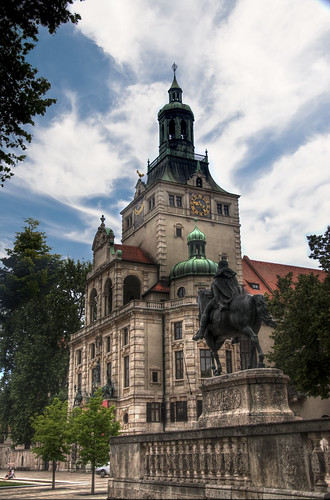

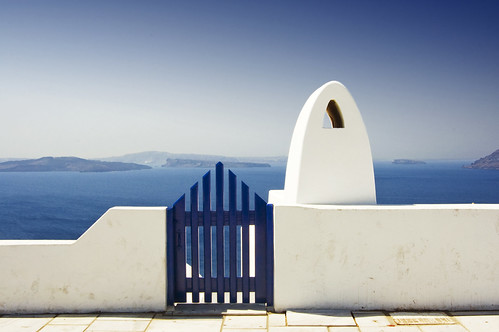

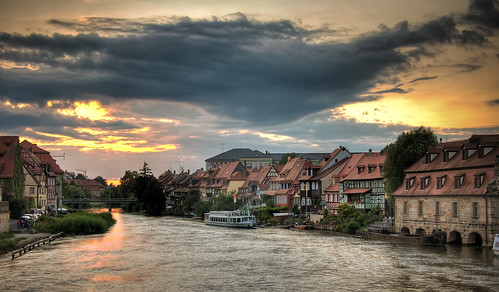
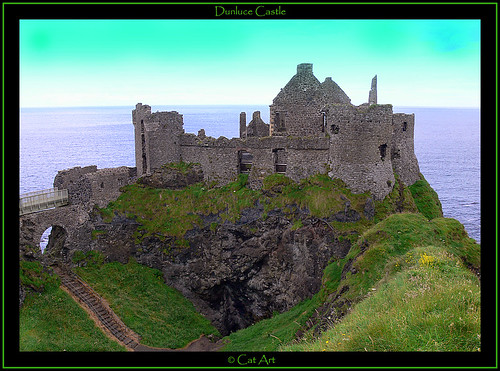

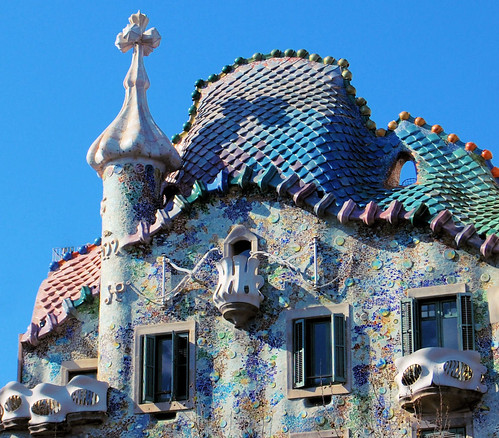
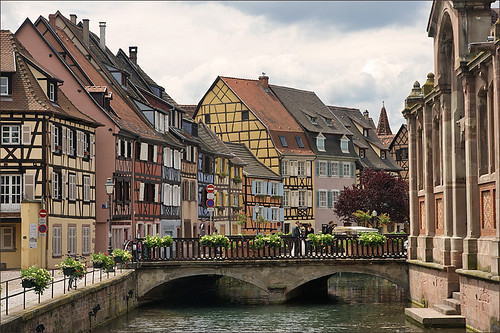

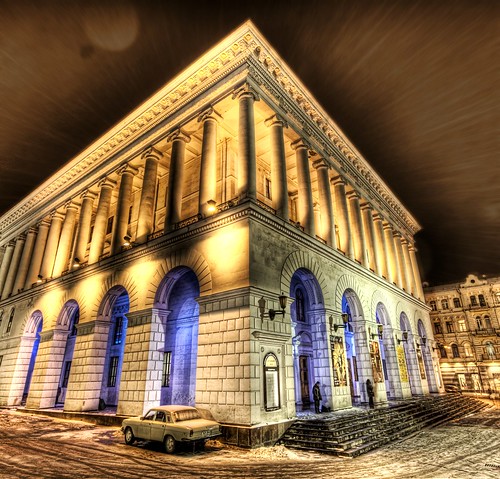
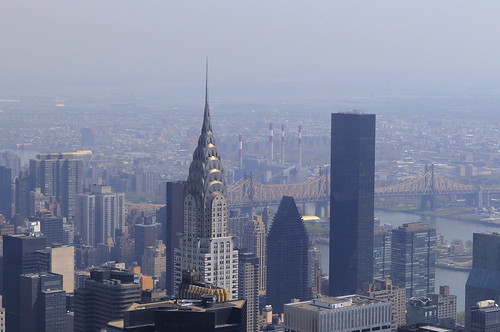


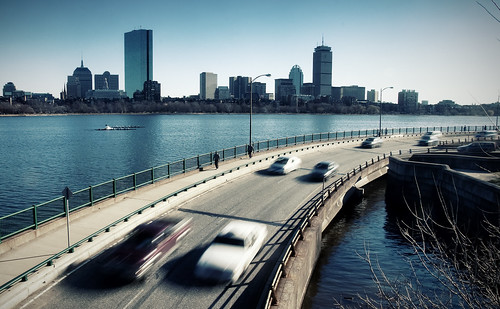

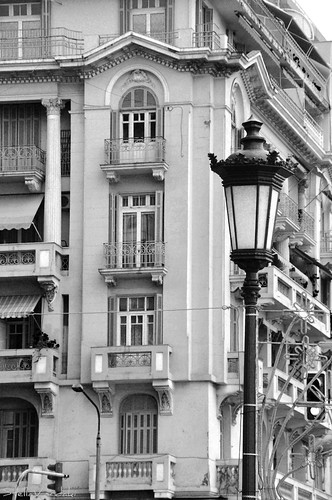
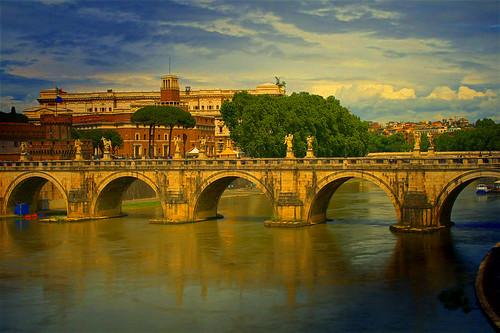

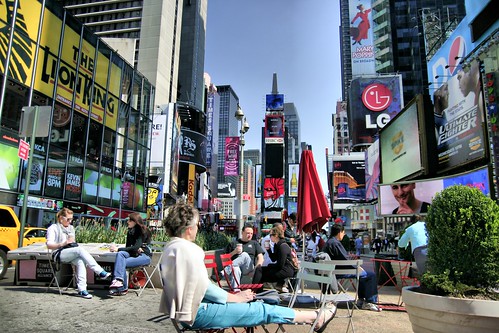

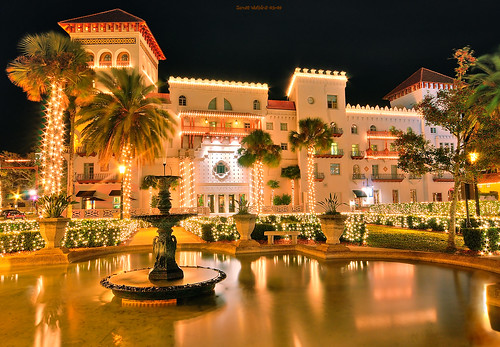
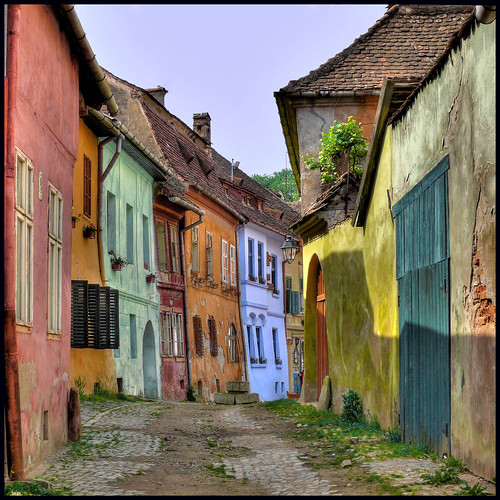



I later discovered that actually there were only two indigenous families left on Eigg. In some ways this makes me kinda sad. Indigenous families believed there was nothing there for their kids, they were encouraged to leave to make a better life. How things have changed, how many of us now see island life as an idyl and if we had the cohones would love to live that existance?
I think there is a deeper question though. Why aren't Scottish people embracing their own country, more welcoming to outsiders and more capable of providing the hospitality that tourism demands ? It seems to me that the settlers throughout the H & I and very often these are English families are far more geared up to doing this successfully.
After initially being slightly perturbed at the Scots/English mix living and owning Eigg, I soon realised something. People on Eigg, NEVER walk past you, everyone waves as they go past, everyone has a decent word to say to visitors, they genuinely seem to want to share their little spot of paradise with you or if thats not the case, they at least appreciate your tourism dollars, either way your made to feel welcomed. This sadly is not always the case in many of the more Scottish tourist spots in the highlands/Islands. I think you can often feel like your not wanted, almost a hinderance. I've certainly experienced this on Skye and I love Skye BTW.
What makes Eigg that wee bit extra special is that the community that now own it, are in my opinion mindful, that they too were once outsiders.
more @ http://wikitravel.org/en/Eigg